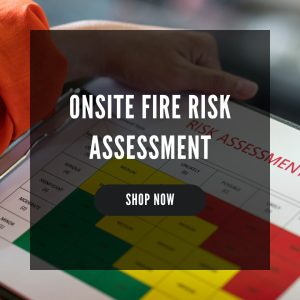As we move into Phase 3 of the Government’s ‘Plan To Rebuild’ and many places of work and businesses start to reopen under the new Covid-19 secure guidelines, PPE has quickly become the norm for workplaces that would not normally wear it such as retail stores, hair salons and restaurants.
This coincides with the warmer weather we have started experiencing now that summer has arrived, with heatwaves being promised well into August.
As a result of wearing PPE products during hot weather, there is now an increased risk of heat stress in the UK because PPE reduces the body’s ability to evaporate sweat and can, potentially, contribute to an increase in heat being generated inside the body.
Heat stress can cause heat exhaustion and lead to heat stroke if the person is unable to cool down and remain at a healthy and safe temperature.
Public Health England and the HSE have published guidance around PPE and heat which aims to help businesses put a plan of action in place to protect their workers, and customers, should they be faced with another heatwave whilst having to wear PPE.
Conduct a heat stress risk assessment
As with any health and safety risks at work, you should carry out a thorough risk assessment so that you can identify any hazards, consider control measures that could be put in place to remove or reduce this hazard, and then implement them.
In the case of heat stress, you need to assess the work rate and climate as well as which workers may be more at risk due to age, build etc. or their specific work activities (someone carrying out manual handling tasks will be more at risk of heat stress than someone who has a more sedentary role).
If you need any support with your risk assessments and method statements, then our qualified Health and Safety Consultants can create thorough templates for your workplace taking most of the work off of your plate and ensuring that your business and workers are safe.
Put control measures in place to reduce exposure to heat at work
The first thing you should do is keep an eye on the weather forecast daily (it can change in 24 hours, so weekly checks will not be sufficient) so that you are aware, ahead of time, when the temperature is predicted to be high and may present a hazard in the workplace.
Then, you should assess whether there are any unnecessary sources of heat in the workplace that can be removed and what measures you can introduce to keep the temperature down.
You could issue a fan to each employee or work area, provide cool drinks or ice cream to keep body temperatures down and check that all your ventilation systems are working.
Once you have a more controlled temperate within your work climate, you can then look at whether your workers can take any action to keep their body temperature down without putting their health at risk by removing PPE.
One effective change that can be implemented into the workplace during hotter months is the adjustment to dress code policies. If you workplace has a strict, formal dress code or uniform that could be increasing one’s body temperature, then relax the rules to enable employees to be more comfortable and cooler.
Communicate the dangers of heat stress with your staff
You must ensure that your workers are aware of the risks, are able to recognise any signs of heat stress in themselves or others and know what control measures are in place to prevent it.
You can do this by issuing a company-wide message via email or text, or you can write up your risk assessment and method statement and have it displayed or stored somewhere in the workplace that is easily accessible to your workers.
Once they are aware of the risk of heat stress, and understand what the signs are, this will also enable them to use a buddy system and look for symptoms of heat stress in others, including customers and visitors.
There are also actions that they can take themselves to reduce their risk of heat stress, such as staying hydrated, staying out of direct sunlight, taking regular breaks, removing layers of clothing and staying in the shade or cooler areas.
Recognising the signs of heat stress
It’s important that everyone can recognise the early signs of heat stress so that they can take appropriate action to prevent it before it develops into something more severe and dangerous.
Dehydration is one of the first things to be aware of and there are a couple of clear indicators that point towards needing to drink more fluids.
The first is the colour of your urine; if your urine is dark or has a strong scent, then this means that you are dehydrated – you should be aiming for pale yellow urine.
The frequency of your bathroom trips is also another clear giveaway, as someone who is hydrated will need the toilet more regularly.
Finally, dry lips or a dry mouth can also indicate that your body is dehydrated.
If you pick up on any of the above, then you need to pour yourself a glass of water and keeping drinking from it throughout the day.
Other signs of heat stress include an inability to concentrate, muscle cramps, increased sweating and feeling faint or dizzy.
Wearing PPE is an adjustment that will take us all some getting used to, but it’s vital for in reducing the spread of coronavirus and allowing places of business to remain open.
Though this does increase the risk of heat stress during warmer weather, if you take the actions detailed above, from conducting a risk assessment to being able to recognise the signs of heat stress, then you should be able to prevent any incidences in your workplace.









